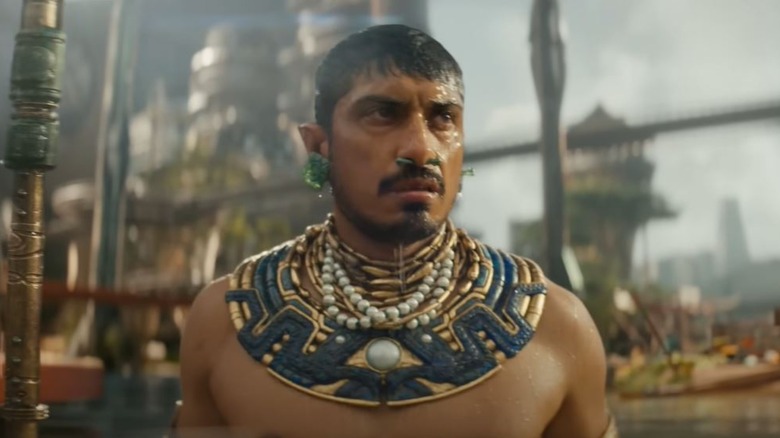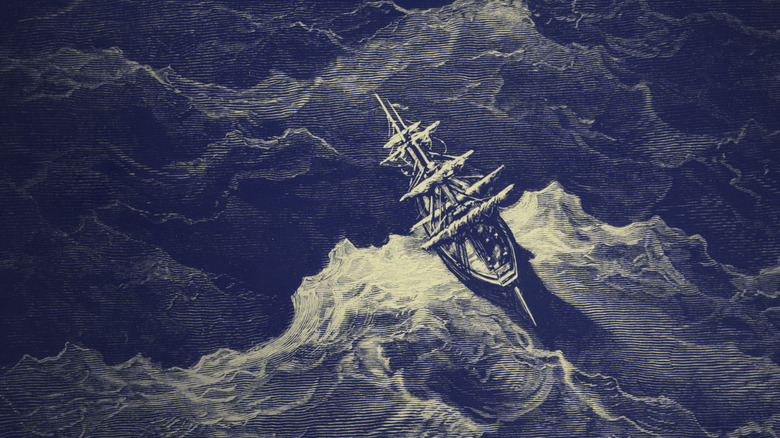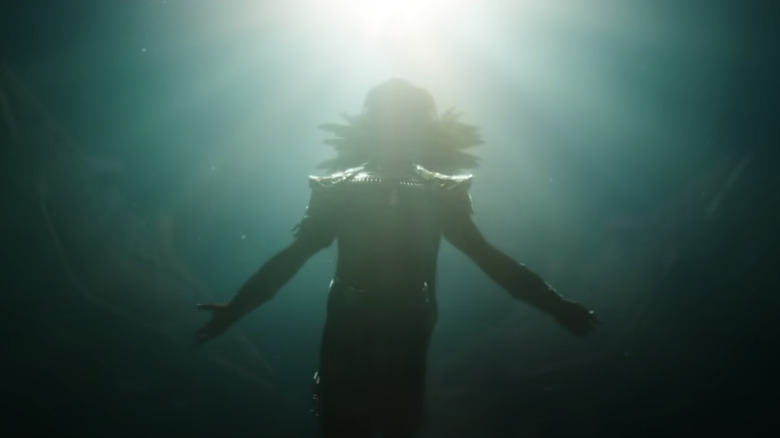The 18th Century Poem That Inspired Marvel's Namor
Recent trailers for "Black Panther: Wakanda Forever" reveal Wakanda's new antagonist. While unheard of previously in the Marvel Cinematic Universe, Namor, played by Tenoch Huerta Mejía in the upcoming film, is one of the first Marvel characters, appearing in "Marvel Comics #1" published in 1939 (via Yahoo! life and Comic Years).
His role as an original Marvel character is one of the many ways Namor is rooted in history and literature. Bill Everett, the creator of Namor, invented the name by spelling Roman backward, explains Yahoo! life. In the 1970s, when Namor starred in his own comic series, the creators of Prince Namor, the Sub-Mariner, gave him the war cry, "Imperius Rex!"
Yet Namor's relationship with his empire, the underwater city of Atlantis, and the marine people called Atlanteans is fraught. He's defined by his identity as an outcast, possibly Marvel's first anti-hero, allying with villains and heroes during his 80-year presence in the comics. The son of an Atlantean and a human, Namor isn't home in Atlantis, ridiculed for his non-blue skin, nor does he fit in with humans. Yet his combined heritage gives him powers that neither the Atlanteans nor humans hold. According to Inverse, Namor can swim faster than Atlanteans, is stronger than humans, and has a longer lifespan. He can also breathe underwater and psychically control all sea creatures. If Namor sounds like a knockoff of DC Comics' Aquaman, remember that Namor predates Aquaman. He also can fly with tiny ankle wings (per Yahoo! life).
The literary inspiration for Namor, the Sub-Mariner
Namor's creator drew inspiration from Samuel Taylor Coleridge's poem "The Rime of the Ancient Mariner," says Inverse. The poem, published in 1798 within a collaboration between Coleridge and William Wadsworth titled "Lyrical Ballads," tells of a ship stuck in the antarctic. When an albatross appears to guide the ship, the mariner spontaneously shoots the albatross and brings a curse upon the ship and its sailors. As penance for his crime against nature, the mariner is forced to wear the albatross' carcass around his neck. The poem says, "Instead of the cross, the Albatross / About my neck was hung" (via Poetry Foundation).
Other lasting cultural references to the poem include the common saying, an "albatross around your neck," which signifies a burden, writes Mental Floss. The ship and its sailors suffer many misfortunes, including encounters with slimy sea creatures, a ghost ship, and dehydration. A famous line reads, "Water, water, every where, / Nor any drop to drink" (per Poetry Foundation).
Eventually, the sailors perish, except for the mariner, who finally earns absolution by blessing a group of sea snakes. The albatross drops from his neck, angels fill the sailors' bodies, and a mysterious power guides his ship back to port. The poem ushered in romantic literature, rejecting the Enlightenment's penchant for reason and order, explains Britannica. Instead, the romantic era praised the emotional, the individual, and the spontaneous.
What do Namor, the Sub-Mariner, and The Rime of the Ancient Mariner have in common?
The comic book character and the poem share connections beyond the word "mariner." First, the poem's ship is ice-bound in the antarctic. Namor's father is U.S. Captain Leonard McKenzie. While commanding an icebreaker ship called the Oracle, he encountered Namor's mother, an Atlantean named Princess Fen, explains Comic Years. Atlantis, in the comics, is located deep below the antarctic ocean.
Furthermore, each story has themes of appreciating or saving nature. While it may be a stretch to call "The Rime of the Ancient Mariner" an environmentalist poem, the natural world's beauty and sacredness were Coleridge's focus, says Britannica. In the comics, Marvel's Namor is the CEO of Oracle, Inc. His company combats environmental issues, something at the forefront of Namor's concerns and motivations.
Finally, Coleridge's mariner is fated to tell his story repeatedly to anyone who will listen. In the poem, his unfortunate audience leaves the re-telling "a sadder and a wiser man," says Shmoop. To be forever re-telling your story is also the fate of Marvel characters, specifically Namor, whose story has been re-told for decades. Yet, "Black Panther: Wakanda Forever" is Namor's first cinematic appearance. The film reenvisions him as the Mesoamerican Feathered Serpent God, Kukulcan, wearing the Aztec Quetzalcoatl's headpiece, writes Screen Rant. Atlantis's new Mesoamerican home and backstory further enrich Namor's historic and layered identity (via Inverse).


